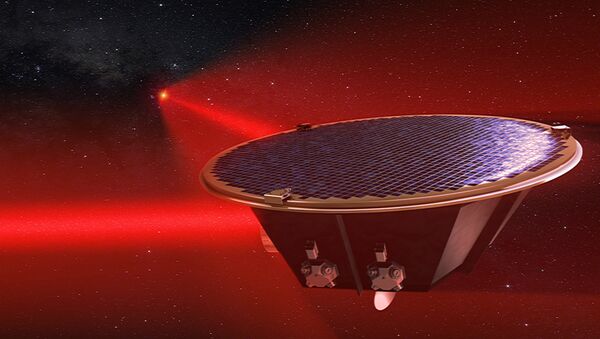The European Space Agency has chosen its next large space science mission – the first ever space-based gravitational-wave observatory, scheduled for launch by 2034.
The Laser Interferometer Space Antenna (LISA) will consist of three spacecraft separated by 2.5 million km in a triangular formation, following Earth in its orbit around the Sun.
Fabio Favata, Coordinator of the Science Program at the European Space Agency, told Radio Sputnik that the program, one of the agency's most advanced projects, will open "different windows into our universe."
"Up to now, almost all the information we have about astronomical sources comes through electromagnetic radiation. LISA will start studying the universe in gravitational radiation and this will allow us to look at sources that do not emit light, like massive black holes orbiting each other, which are a key component of our universe," Favata said.
The observatory will build on knowledge gained from Earth-based gravitational-wave observatories such as the Laser Interferometer Gravitational Wave Observatory (LIGO). It has detected gravitational wave signals three times, most recently in January this year from a distant black hole collision.

LISA will find "huge black holes, millions of solar masses which again are invisible but play a key role in the formation of structure in our universe. They will really tell us how the universe grew in its present state, from a rather amorphous, huge cloud of gas at the very beginning into the very structured universe that we know today."
"We're not going to see, we're going to hear it. It's like sitting in a forest, of course you will see some animals with your eyes but you will hear many more animals with your ears that you are not able to see."
Gravitational waves offer the only way of studying distant black holes, since their gravitational waves travel through the universe without disturbing matter like light waves do.
"This is only way that we can actually study sources of very massive black holes that are far away from us, that are essentially invisible. Given that those black holes have shaped the history of the universe, it is very valuable information to understand how our universe became what it is today."


